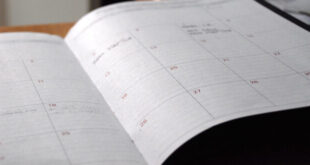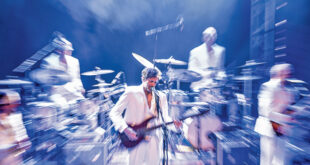White stuff swirling through the air. Up here in ski country we relish it in winter, but not in July. This month the white fluff is cottonwood seeds adrift in reproductive splendor. That fine yellow stuff all over your car and sticking to your windows a few weeks ago was not a sprinkling of Buttian magic fairy dust but pollen.
As you sniffle, eyes watering and your energy level requires half-day naps just remember…we’re the wildflower capital of Colorado for a reason. Flowers.
Maybe now’s a good time to have that little talk about the birds and the bees and yes, plant sex, since your allergies have kicked into high gear like the other affected 20 percent of America, which roughly translates into about 40 million fellow sufferers.
Impacts for the plants
Dr. Alison K Brody, a professor at the University of Vermont and summer researcher at the Rocky Mountain Biological Lab (RMBL) just up the road in Gothic, says, “Pollen is used to provision offspring—it is rich in protein and carbohydrates. Bees collect pollen in specialized structures on their bodies [hairs on the abdomen, or a depression in the hind legs called ‘corbiculae’ plural, ‘corbicula’ singular] and take it back to their nests where they feed it to the developing larval bees.
“Others [e.g., flies that are also often quite good pollinators] consume the pollen themselves. So food is the direct benefit, but of course without pollen there is no plant sex. Pollen is the male gamete—the plant equivalent of sperm, and ovules, female gamete, once fertilized, turn into seeds, and without plants there are no pollinators.”
This knowledge probably doesn’t make you feel less passionate about ripping pollinating plants out of the ground by their roots. However, without them—well, there goes a large percentage of your food source, not to mention all the other plant uses like medicinal pharmaceutical drugs.
The digital site at rmbl.org reminds us, “Pollination is clearly important to both flowering plants and their pollinators, but it is also important to any species that eats the fruits of flowering plants. Many economically important agricultural crops require biotic pollination (biotic pollination refers to the mostly mutually beneficial interactions between some flowering plants and pollinators such as insects, birds, bats, etc.). The list includes common fruits such as apples, blueberries, melons, and many others. It also includes crops we don’t often think of as fruits, like almonds, squash, tomatoes, and coffee beans or plants that humans don’t eat, like alfalfa or other grasses and grains used as feed.
But pollination is important for more than just agriculture—flowering plants are a critical component of many terrestrial ecosystems. More than 100,000 different invertebrates (butterflies, moths, bees, flies, beetles, etc.) and more than 1,000 different vertebrates (birds, mammals, reptiles, etc.) pollinate roughly 75 percent of flowering plants, making the interactions between plants and pollinators a dominant mode of species interactions in terrestrial ecosystems.”
Impacts for the people
So, with all that on the line, surely you can reasonably suffer for a few summer weeks to enhance biodiversity and your given need to eat, right?
You may wonder what exactly is going on in your body that can slam you with flu-like symptoms. Believe it or not, scientists aren’t actually sure why some people are more sensitive to allergens, but your body reads allergens as Alien Attack and releases histamine to try to keep them out and that starts a chain reaction that causes those annoying allergic symptoms. Consider your poor nose as an air filter for your lungs. Nose hairs trap airborne allergens, preventing them from reaching your lungs and thus your schnoz’s filtration works exceptionally well in that first line of defense. But when those alien substances are floating around, the released histamine causes a dilation of the blood vessels inside the nose to block entry to foreign particles—hence all the symptoms and yucky excess mucus. Your eyelids have the same mission and also trap airborne particles, and like your overly protective mom, cause your eyes to turn red and itchy, and make you produce a sea of tears. In essence, your body is reacting to a false alarm since most airborne substances and other types of allergens are usually not harmful. Unfortunately, your body doesn’t recognize that there are no weapons of mass destruction endangering it but these are your body’s defenses at work and they’re not taking any chances.
What you can do…
So how to combat the symptoms that have you whining and sniveling? Aside from all the over-the-counter drugs and anti-histamines, there are many natural and herbal remedies as well as precautions one can take. First, do a Google search for pollen widgets that you can download to your phone or computer. There are many free apps. These are basically regional weather forecasts that give pollen counts for the day or week and show where the highest concentrations are. You can then avoid going out on those days. A good source of information can be found online at pollen.com.
Pollen is sneaky and can slither into your home despite your efforts to stay indoors so keep the doors and windows shut, especially during peak hours from 5 a.m. to 10 a.m. when pollen count is at its highest. Dust and vacuum often, and make sure your machine has a HEPA filter. Shower and shampoo those tresses of hair before you hit the sack at night to keep the pollen off your pillow so at least you’re not breathing it in during your fitful slumber. Use your clothes dryer and not the outdoor clothesline. Roll your car windows up when you drive. Your pets can also bring pollen in on their fur so maybe the pooch shouldn’t be sleeping on your bed until after the season subsides (yeah, good luck with that one…) or at least hose them down before they come inside. Be aware that your pets can also be affected by pollen allergies as well.
Local physician Jenny Ward confirms the increase in allergy patients in the last month. “This is the time I see the most symptoms—post-nasal drip, sneezing, runny nose, nasal obstruction, congestion, itching, throat irritation, coughing, irritability and fatigue,” she runs through the gamut of various pollen consequences. “I’ve heard from some that taking local honey before the onset of allergy season helps.”
Dr. Ward feels that local honey may give a sort of natural inoculation since the bees pick up the pollen from the area and the honey may reduce the severity of your symptoms. She also recommends flushing nasal passages with a neti pot. Make sure you use sea salt.
Many people complain of heightened allergies during haying season when local ranchers are cutting the Timothy hay, and there’s a second hay crop coming up in August.
Some of the natural remedies that are touted to give some relief are foods that are rich in Omega 3 fatty acids, like wild salmon and flax seeds. The plant hairs of the stinging nettle contain histamines, and taking it in a tea form works like a little vaccine. Peppermint tea is also great, and delicious, because its essential oils act like a decongestant and anti-inflammatory and it has mild antibacterial elements.
Steam helps immensely, either in the shower or a hot wet washcloth held to your face. Butterburr is thought to reduce mucus production but you can kick it up several notches with wasabi, which contains allyl isothiocyanate, promoting mucus flow. As always up here at altitude, stay hydrated.
So buckle up because the season is still upon us—get yourself a case of prettily decorated tissue boxes, eye drops and your favorite movies to watch during the peak pollen fly time…. Gesundheit!
 The Crested Butte News Serving the Gunnison Valley since 1999
The Crested Butte News Serving the Gunnison Valley since 1999

